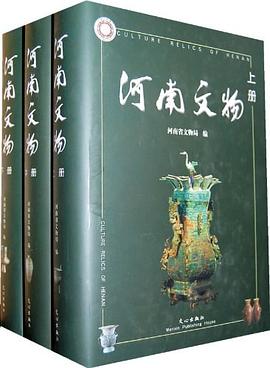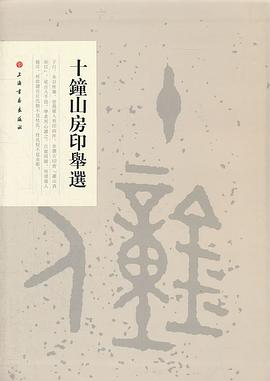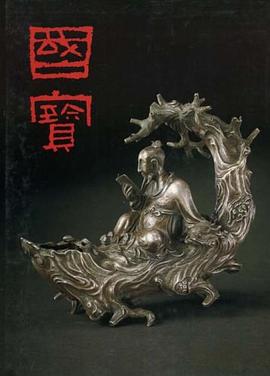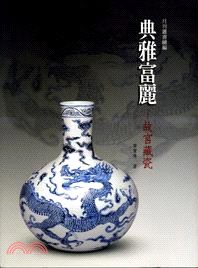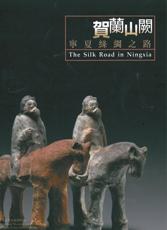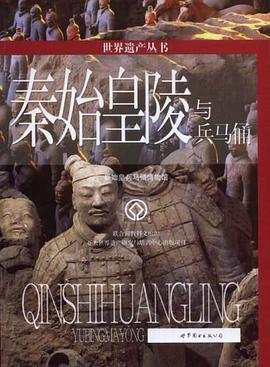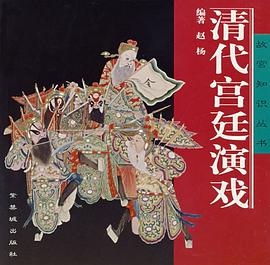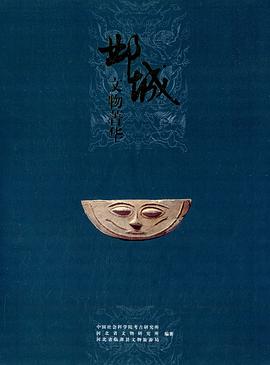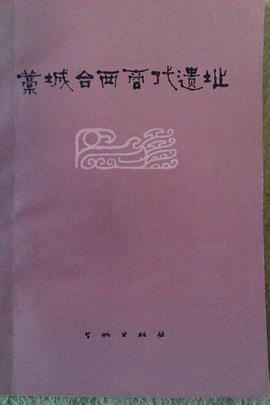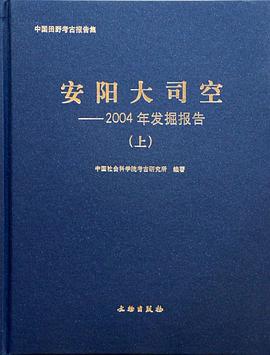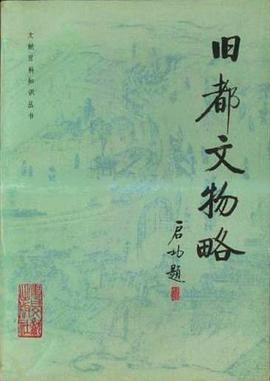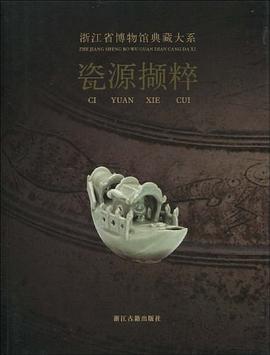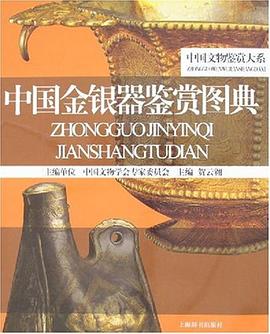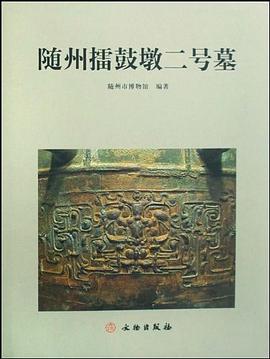
《随州擂鼓墩二号墓》主要内容:The Tomb No.2 at Leigudun in Suizhou (Abstract) The tomb No. 2 at Leigudun (on a mound in Zengdu district, 2 kilometers northwest to the city proper of Suizhou) is the second largest tomb after the well-known tomb of the Marquise of Zeng, i.e., the tomb No.1 at Leigudun. Both of the tombs are located in Suizhou and belong to the members of the ruling lineage of the Zeng polity. It is believed by archaeologists that the two tombs are of equal significance in providing important evidence for understanding of the Sui culture, ritual practices and musical performances in the pre-Qin times, and the relationships between the Sui and Chu polities. The present volume reports the discovery and excavation of the tomb No.2 at Leigudun. It includes 449 burial goods of various kinds, and 32 are unearthed from a disturbing ditch. Date of the tomb and the social status of the occupant are both given in detail in the textual sections. Though the tomb No.2 was actually excavated very early, the site report only comes out as late as 2008 for many reasons. We would particularly like to thank the people who worked very hard in the past several decades keeping and conserving the materials for their publication.
The report has four chapters.
Chapter I Introduction
The first section introduces the geographic location of Suizhou, environmental and political changes since the late Western Zhou dynasty. Section one also includes the situation of the cemetery where the tomb No. 2 is located, conservation and reconstruction of the finds, and material preparation for publication.
Suizhou is located in the so-called Sui-Zao 'corridor', a narrow joint area of the south and north parts of China, with beautiful landscapes, comfortable climate conditions and fertile soil for agricultural use and densely veined with rivers; for all the above mentioned geographic and natural conditions, the city has always been perceived since the antiquity as an ideal and important location for human living and cultural communication between the south and the north of China. The Sui polity was established in the late Western Zhou period. During the early Spring and Autumn period, it moved its capital to the Sui-Zao corridor area and subsequently became a powerful polity on the east bank of the Hanshui River.
Chapter II Tombs and the Major Occupant
Data of the tomb No.2 includes four aspects: burial mound, burial pit, furnishings, and treatments of the dead.
1. There was indeed a mound right above the burial chamber of the tomb No.2 at Leigudun, which was totally leveled to the ground by the local military force when building a camp;
2. The second part introduces the location, orientation, size, structure, and the fill of the burial pit;
3. The third part introduces the major coffin and subordinate coffins; the coffin of the tomb occupant is located in the middle of the northern part of the burial chamber, seriously deteriorated; coffin accessories are scattered around; remains of another coffin, probably a subordinate coffin to the major coffin, was discov-ered in the southwestern comer of the chamber, with no burial goods inside;
4. The skeletal data is quite limited since the bones are highly deteriorated; what we can know from the bones left is that the major occupant was headed to the east, while the sacrificed victim in the accompanying coffin was buried in a north-south orientation.
Chapter III Burial Goods
Very abundant burial goods (in total, 449 single objects) have been recovered from the tomb No.2,including bronzes, stone and jade objects, pottery vessels, horn and glass objects, shell ornaments, and lead and tin vessels. According to function, they can be classified into mainly six categories, i.e., ritual vessels,musical instruments, life tools, horse and chariot fittings, adornments, and burial goods.
(1) Bronzes
Ritual vessels include: 17 ding (meat-stewing tripod), 8 gui (grain-offering vessel), 4fu (round vessel with flat bowl on high openwork foot), 10 li (tripodal cooking vessel with pouch-shaped feet), 1 yan (grain steamer), 4 zun (liquid-serving vessel), 2 washing pots, 4 pots, 3 dou (stem bowl), 1 fu (vessel with globular bottom, made to fit a stovetop), 1 dish, 1 yi (pouring vessel), 3 bi (pointed spoon), and 1 dou (ladle with cylindrical container);
Musical instruments include: 36 yongzhong bells, 1 drum stand, 22 hooks for hanging the bells;
Life tools include: 1 fire-pan, 1 dustpan, 1 lid, 1 hook-shaped implement, and 1 funnel;
Horse and chariot fittings and ornaments include: 4 canopy mounts, 5 axle-end ornaments, 6 horse bits,16 reign controllers, 102 bridle ornaments, 11 bicha, 36 bird-shaped and 18 plank-shaped adornments.
(2) Jade and stone burial goods
Ritual objects include: 1 bi (ring-shaped disc), and 1 gui (pentagonal tablet);
Musical instruments include: 12 chimestones;
Ornaments include: 2 arc-shaped pendants, and 8 agate rings;
(3) Ceramic vessels: 7 dou
(4) Lead and tin objects include 64 fish-shaped ornaments, and 15 coffin accessories;
(5) Other significant finds include 7 horn gig-bits, a pair of deer antlers, 3 crystal beads, 1 string of ring-shaped beads, and 1 shell ornament.
The tomb was most likely to have been looted in antiquity, which is corroborated by the co-occurrence of the disturbing ditch near the coffin of the major occupant and the large amount of burial goods seemingly left by the looters within the ditch by churning the tomb soil. It is for this reason, we deliberately separate these finds from those unearthed from within the tomb chamber.
The 32 finds from the ditch include 1 pottery dou, 1 stone bi, 1 jade ram figurine, 1 jade rabbit figurine,1 jade plug, 20 glass beads, 5 perforated turquoise beads, and 1 spade-shaped iron object.
All these finds are introduced in a typological order. One sample is selectively given when many typologically identical vessels are found.
Chapter IV Conclusions
The last section of this report includes the following research results:
(1) Date of the tomb No.2 at Leigudun: late phase of the early Warring States period through the early phase of the middle Warring States period;
(2) Identity of the major tomb occupant: another Marquise of the Zeng polity after the famous Marquise Yi;
(3) Though the finds reflect a serious influence from the Chu culture, the major elements of the mortuary practice belong to the Zeng cultural sphere.
具体描述
读后感
在文物考古界的热切企盼中,《随州擂鼓墩二号墓》发掘报告终于与读者见面了。屈指数来,擂鼓墩二号墓自1981年7月发掘出土至2008年10月报告由文物出版社出版,已是28个春秋了。28年斗转星移,人世沧桑,可见一部考古发掘报告的出版面世是多么不易。 擂鼓墩二号墓是继曾侯乙墓之...
评分在文物考古界的热切企盼中,《随州擂鼓墩二号墓》发掘报告终于与读者见面了。屈指数来,擂鼓墩二号墓自1981年7月发掘出土至2008年10月报告由文物出版社出版,已是28个春秋了。28年斗转星移,人世沧桑,可见一部考古发掘报告的出版面世是多么不易。 擂鼓墩二号墓是继曾侯乙墓之...
评分在文物考古界的热切企盼中,《随州擂鼓墩二号墓》发掘报告终于与读者见面了。屈指数来,擂鼓墩二号墓自1981年7月发掘出土至2008年10月报告由文物出版社出版,已是28个春秋了。28年斗转星移,人世沧桑,可见一部考古发掘报告的出版面世是多么不易。 擂鼓墩二号墓是继曾侯乙墓之...
评分在文物考古界的热切企盼中,《随州擂鼓墩二号墓》发掘报告终于与读者见面了。屈指数来,擂鼓墩二号墓自1981年7月发掘出土至2008年10月报告由文物出版社出版,已是28个春秋了。28年斗转星移,人世沧桑,可见一部考古发掘报告的出版面世是多么不易。 擂鼓墩二号墓是继曾侯乙墓之...
评分在文物考古界的热切企盼中,《随州擂鼓墩二号墓》发掘报告终于与读者见面了。屈指数来,擂鼓墩二号墓自1981年7月发掘出土至2008年10月报告由文物出版社出版,已是28个春秋了。28年斗转星移,人世沧桑,可见一部考古发掘报告的出版面世是多么不易。 擂鼓墩二号墓是继曾侯乙墓之...
用户评价
青铜器多粗糙草率,且核心礼器多为拼凑成套,为“曾侯”亦非“曾侯”。
评分青铜器多粗糙草率,且核心礼器多为拼凑成套,为“曾侯”亦非“曾侯”。
评分青铜器多粗糙草率,且核心礼器多为拼凑成套,为“曾侯”亦非“曾侯”。
评分改为曾侯墓
评分曾侯乙、M2均未出铜敦、剑,与楚文化大不相同,应是“曾文化”的特征。
相关图书
本站所有内容均为互联网搜索引擎提供的公开搜索信息,本站不存储任何数据与内容,任何内容与数据均与本站无关,如有需要请联系相关搜索引擎包括但不限于百度,google,bing,sogou 等
© 2025 qciss.net All Rights Reserved. 小哈图书下载中心 版权所有


